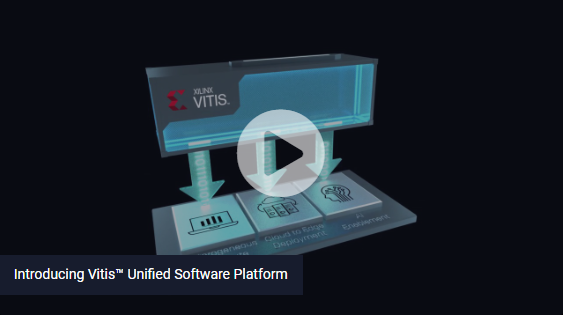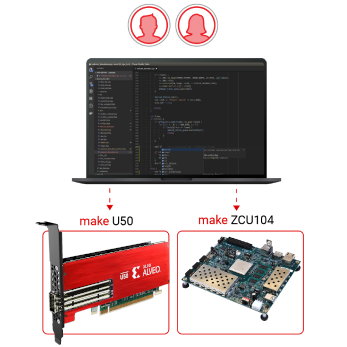English | 日本語

|
The Vitis™ unified software platform enables the development of embedded software and accelerated applications on heterogeneous Xilinx® platforms including FPGAs, SoCs, and Versal ACAPs. It provides a unified programming model for accelerating Edge, Cloud, and Hybrid computing applications.
Leverage integration with high-level frameworks, develop in C, C++, or Python using accelerated libraries or use RTL-based accelerators & low-level runtime APIs for more fine-grained control over implementation — Choose the level of abstraction you need.
The Vitis Tutorials take users through the design methodology and programming model for deploying accelerated application on all Xilinx platforms.
Start here! Learn the basics of the Vitis programming model by putting together your very first application. No experience necessary!
Learn how to use Vitis, Vitis AI, and the Vitis accelerated libraries to implement a fully end-to-end accelerated application using purely software-defined flows - no hardware expertise required.
Use Vitis AI to configure Xilinx hardware using the Tensorflow framework. Vitis AI allows the user to quantize, compile, and deploy an inference model in a matter of minutes.
Learn how to use the Vitis core development kit to build, analyze, and optimize an accelerated algorithm developed in C++, OpenCL, and even low-level hardware description languages (HDLs) like Verilog and VHDL.
Learn how to use Vitis High-Level Synthesis (HLS), compiler, analyzer, and debugger to identify performance bottlenecks and make modifications to increase algorithm efficiency and performance using an Alveo™ Data Center acceleration card.
Learn how to use the Vitis core tools to develop for Versal™, the first Adaptive Compute Acceleration Platform (ACAP) device from Xilinx.
Learn how to target, develop, and deploy advance algorithms using Versal's AI Engine array in conjunction with PL IP/kernels and software applications running on the embedded processors.
Learn how to build and use embedded operating systems and drivers on Xilinx Adaptive SoCs and the MicroBlaze™ soft processor. These tutorials cover open-source operating systems and bare metal drivers available from Xilinx, compilers, debuggers, and profiling tools for traditional SoC software development.
Learn how to build custom platforms for Vitis to target your own boards, and how to modify and extend existing platforms.
Learn how to configure the platform hardware sources, construct the runtime software environment, add support for software and hardware emulation, and more.
Learn how to optimize the CPU side of your application for efficient memory allocation, how to sequence system-level events, and more.
On the back-end, learn how to control Vitis system-level topologies and low-level hardware implementation.
Copyright© 2020 Xilinx

